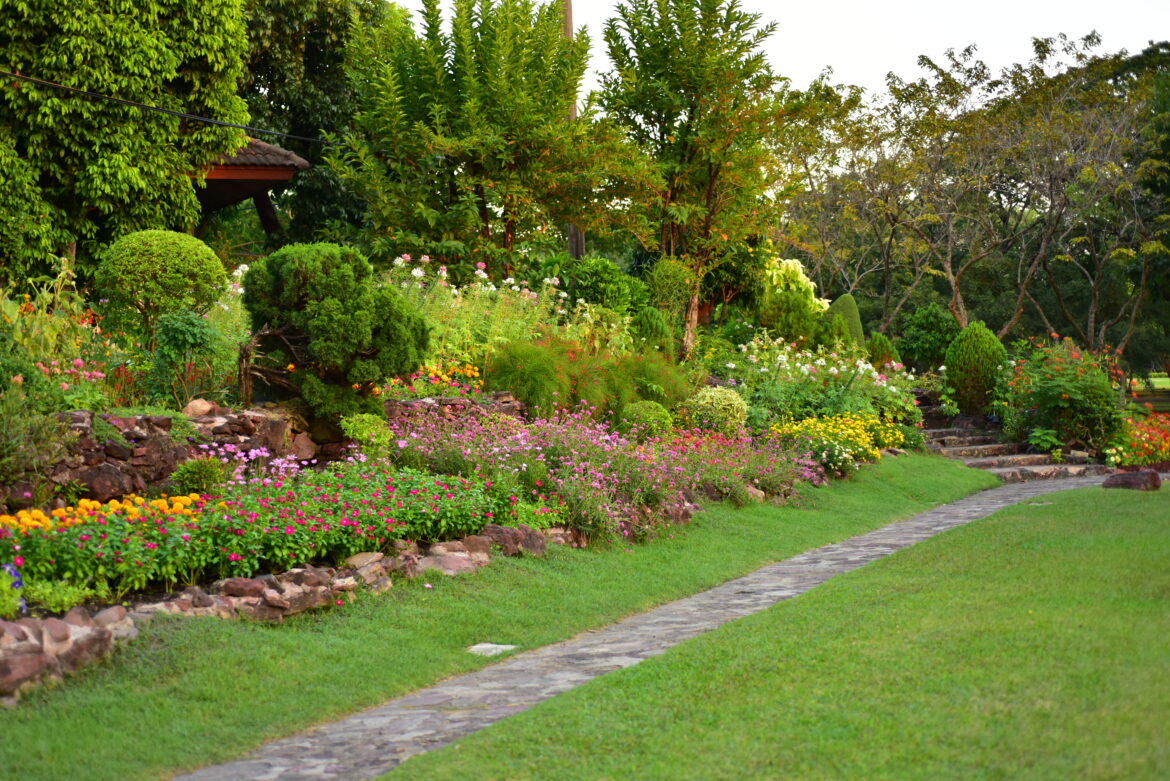
Low-Maintenance Landscaping: Designing Gardens That Practically Take Care of Themselves
Clients today want great-looking landscapes—but few want the upkeep. That’s where smart, low-maintenance design comes in. For professional landscapers and contractors, offering self-sustaining solutions isn’t just good service—it’s good business. The less time clients spend on weeding, watering, and pruning, the happier they’ll be. The right approach makes that possible without sacrificing curb appeal.
Here’s how to design landscapes that stay sharp with minimal input, using the right mix of drought-resistant plants, mulch, sod, and decorative gravel.
Start with the Right Plant Palette
Low-maintenance design starts at the plant list. Choose drought-tolerant species that thrive in your region’s soil and climate. Native plants are always a strong choice—they’re built to handle local conditions without constant babysitting.
Look for:
- Ornamental grasses like blue fescue or fountain grass
- Succulents such as sedum or agave
- Shrubs like boxwood, barberry, or juniper
- Flowering perennials such as coneflower, yarrow, or black-eyed Susan
Stick to plants that don’t need heavy pruning or deadheading. Bonus points for species that naturally resist pests and disease.
Pro tip: Group plants by water needs (hydrozoning) so irrigation can be dialed in efficiently.
Mulch: Your First Line of Defense
Mulch does a lot of heavy lifting in low-maintenance landscapes. It locks in soil moisture, smothers weeds, and regulates soil temperature—all while giving beds a clean, finished look.
Shredded hardwood, pine bark, and cedar mulch are solid organic options. For ultra-low maintenance, consider rubber mulch or stone mulch where appropriate.
Key tips for mulch use:
- Apply 2–4 inches deep for effective weed suppression.
- Don’t pile mulch against plant stems or trunks—keep a few inches of breathing room.
- Refresh organic mulch annually to maintain coverage.
Proper mulching not only reduces watering needs but also cuts down on the time spent weeding, which clients love.
Sod for Instant Coverage with Minimal Fuss
For areas where lawn is non-negotiable, sod is the fastest path to a green, finished look. But not all sod is created equal when low maintenance is the goal.
Choose drought-tolerant varieties like:
- Bermudagrass (great for sun and heat)
- Zoysiagrass (dense and weed-resistant)
- Buffalograss (ultra-low water requirements)
Educate clients on mowing height—keeping turf a bit taller helps shade out weeds and retain moisture. Pair sod installations with smart irrigation systems to further cut down on labor and water waste.
Decorative Gravel: Clean, Modern, and Zero Upkeep
Decorative gravel delivers on style and function. It prevents weed growth, improves drainage, and adds texture and contrast—all with zero watering or fertilizing.
Options like crushed granite, river rock, pea gravel, or lava rock can define pathways, highlight planting beds, or serve as the main groundcover in xeriscape designs.
Best practices for gravel installation:
- Use a solid weed barrier fabric underneath.
- Choose the right gravel size for the application (larger rocks stay put better on slopes).
- Avoid mixing gravel directly into the soil—it can impact drainage and plant health.
Gravel also pairs well with stepping stones and metal edging to create crisp, modern lines.
Smarter Irrigation, Less Water Waste
The goal of low-maintenance landscaping isn’t to eliminate watering—it’s to make it smarter. Drip irrigation and soaker hoses deliver water right where it’s needed, minimizing evaporation and runoff.
Pair irrigation with moisture sensors or smart timers for maximum efficiency. Many systems now allow app-based control, which lets clients adjust schedules easily without guessing.
By combining hydrozoning with drip systems, you give plants just enough water without overdoing it.
Design for Long-Term Success
Low-maintenance doesn’t mean no maintenance. But it does mean thinking ahead:
- Limit high-maintenance features like tightly clipped hedges or large annual beds.
- Use edging to keep mulch and gravel contained.
- Avoid overplanting—give each plant room to grow into its space naturally.
- Prioritize structural elements like boulders, dry creek beds, and hardscape features that require little to no upkeep.
When the bones of the design are solid, plants are well-chosen, and materials are thoughtfully installed, the landscape holds up with minimal intervention.
Give Clients What They Really Want
Most clients aren’t asking for complicated landscapes—they want something that looks great without constant work. For landscapers and contractors, offering low-maintenance solutions builds trust and sets your work apart.
By focusing on drought-tolerant plants, proper mulching, efficient sod choices, decorative gravel, and smart irrigation, you create landscapes that practically take care of themselves—and that keep clients coming back.
At FSI Landscape Supply, we stock the materials that make low-maintenance designs work—premium mulch, sod, and a wide selection of decorative gravel. Whether you’re sourcing for a new project or restocking for the season, we’re here to help you get the job done right.
Visit us or contact our team today to learn more about our product selection and ordering options. Let’s make landscapes that look great—and stay that way.
